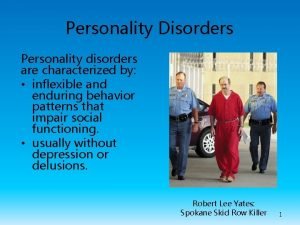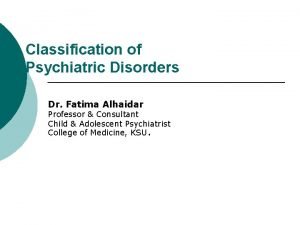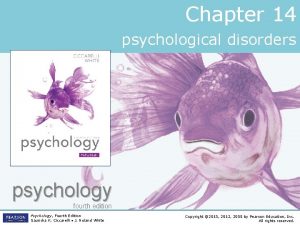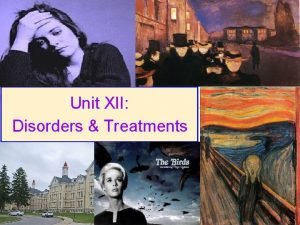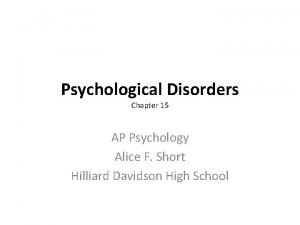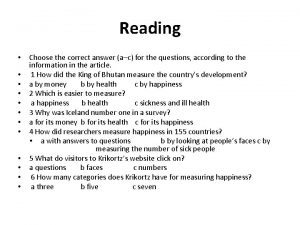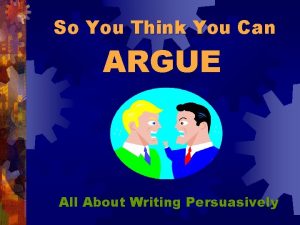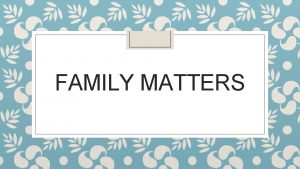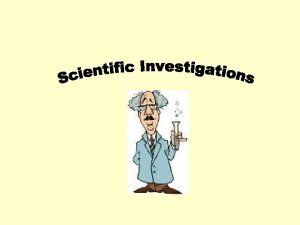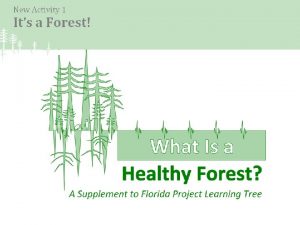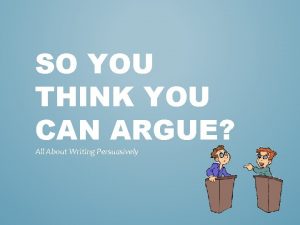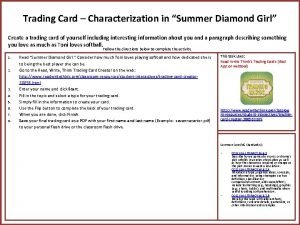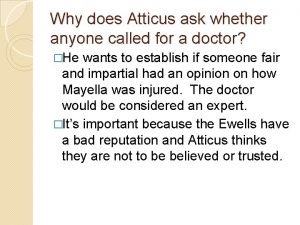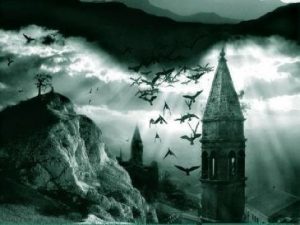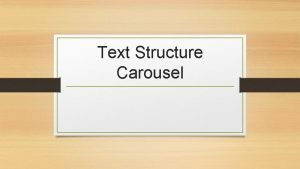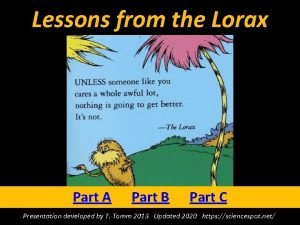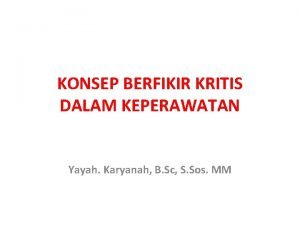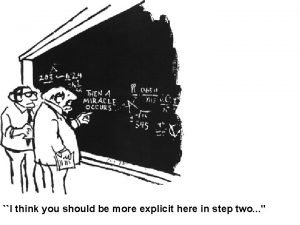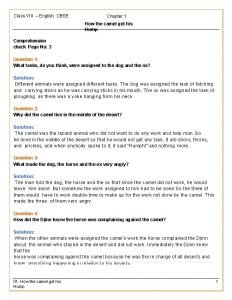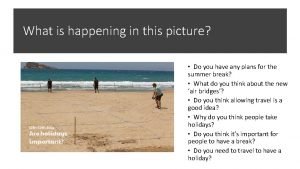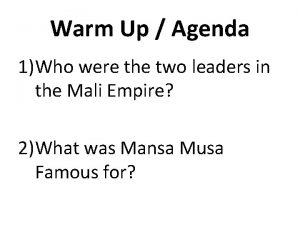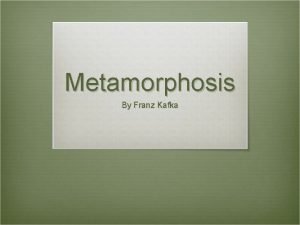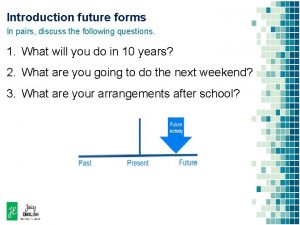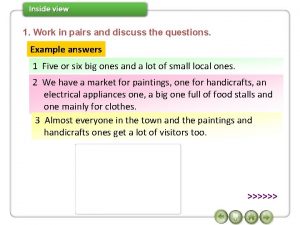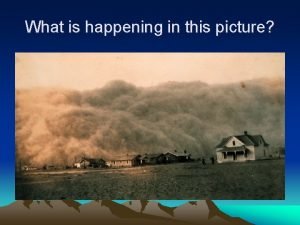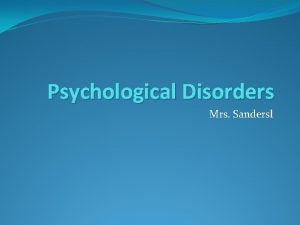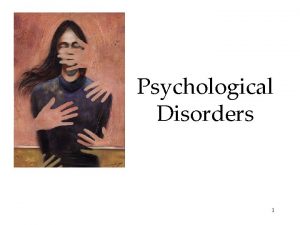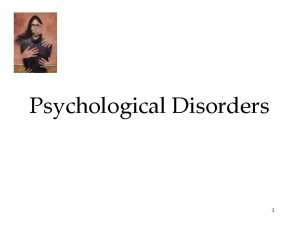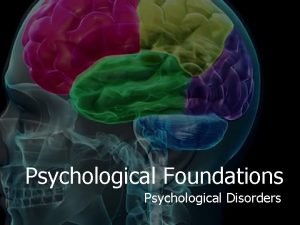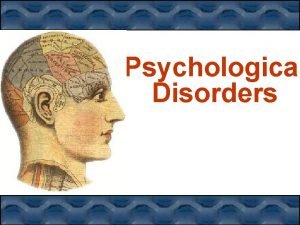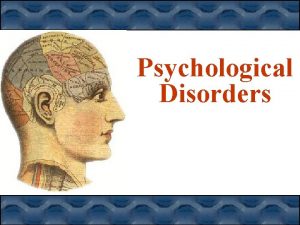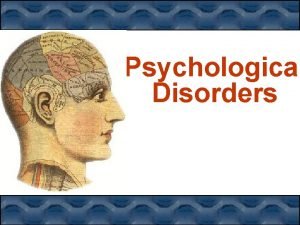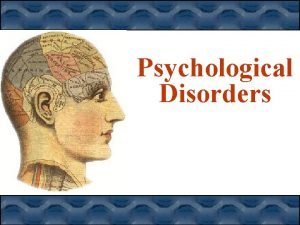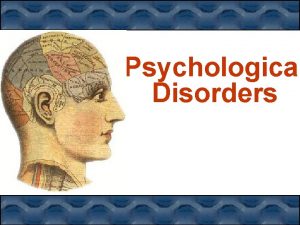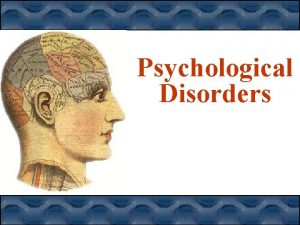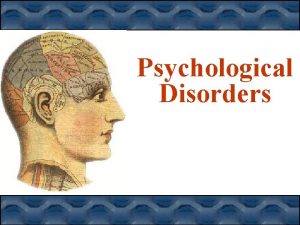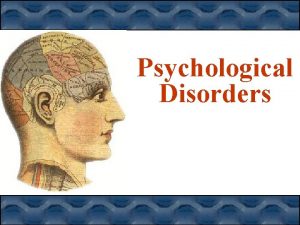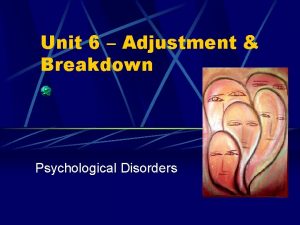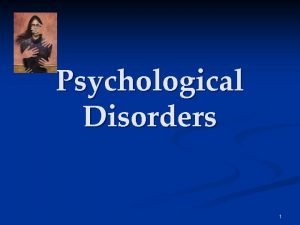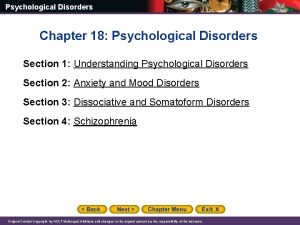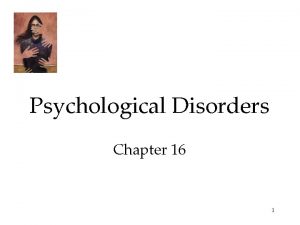Psychological Disorders Write What do you think a



























































- Slides: 59

Psychological Disorders

Write What do you think? a definition for a psychological disorder. Do not give examples or define specific disorders- what does it mean to have a psychological disorder?

Psychological Disorder –distressing & harmful; disruptive –behavior is uncontrollable –Unjustified, Irrational

Psychological Disorders Must have personal distress and impaired functioning

Personal Distress The behavior/symptoms causes significant personal distress to the patient (may not realize) –Potential harm to self or others

Daily Impairs Functioning life functioning is impaired (one or both) –Work/School life –Home life –Varies throughout time/ culture

Ancient causes of “madness” –movements of sun or moon lunacy- full moon (lunar) –evil spirits

Ancient “cures” –Exorcism –Caged like animals, beaten, burned, castrated, – blood mutilated replaced with animal’s blood!

Diagnosis DSM-V Diagnostic and Statistical Manual of Mental Disorders describes specific symptoms and diagnostic guidelines for psychological disorders – Provides a common language & comprehensive guidelines to help diagnose

DSM-V vs DSM-IV 5 axis diagnostic system now simplified – a single diagnostic of all factors that could contribute to the patients well-being (physical, social, emotional, etc) Reduction in the amount of time symptoms must be present to be diagnosed with a disorder. (for example, instead of 6 months with the symptoms now its only 3 months)

Insanity legal only definition unable to determine between right & wrong or understand consequences

Anxiety An unpleasant emotional state characterized by general, vague feelings of tension, fear and apprehension

Generalized Anxiety Disorder (GAD) Constant worry about many issues w/o cause, seriously interferes with functioning – Physical symptoms headaches stomach aches muscle tension irritability

Panic Disorder Panic attacks— sudden episode of helpless terror with high physiological arousal (increased blood pressure, heart beat, temp. , sweating) Very frightening —sufferers live in fear of having them

Agoraphobia often develops Fear of being situations NOTin FEAR OF OUTDOORS in which escape might be difficult, they don’t feel safe- public places, crowds, wide open spaces – Mostly confined to homes- they are safe there

Specific Phobias Intense, irrational fears that may focus on ……. Inappropriate response to ………. .

Natural environment type • the fear of heights (acrophobia) • the fear of lightning and thunderstorms (astraphobia).

Situational type –the fear of small confined spaces (claustrophobia) – being "afraid of the dark, " (nyctophobia). –Monophobia—fear of being alone –Gephyrophobia - Fear of crossing bridges. –Ligyrophobia — Fear of loud noises. –Xenophobia — Fear of strangers,

Blood/injection/injury type – the fear of medical procedures including needles and injections (aichmophobia) Algobphobia—fear of pain Pyrophobia—fear of fire Emetophobia — Fear of vomiting. Radiophobia— Fear of radiation or x-rays Hemophopia (Haemophobia) — Fear of blood

Animal type – the fear of spiders (arachnophobia) – the fear of snakes (ophidiophobia). Ailurophobia—fear of cats Myrmecophobia — Fear of ants. Cynophobia — Fear of dogs or of rabies. Mottephobia — Aversion to moths and butterflies.

Other – the fear of the number 13 (triskaidekaphobia) – the fear of clowns (coulrophobia). Anthropophobia—fear of men Ephebiphobia — Fear/dislike of teenagers. Zapatophobia - Fear of shoes, socks, or sandals.

Common and uncommon fears 100 Percentage 90 of people 80 surveyed 70 60 50 40 30 20 10 0 Snakes Being Mice Flying Being Spiders Thunder Being Dogs in high, on an closed in, and alone exposed airplane in a insects lightning In a places small house place at night Afraid of it Bothers slightly Not at all afraid of it Cats Driving Being In a a car crowd of people

Posttraumatic Stress Disorder (PTSD) Follows events that produce intense horror or helplessness (traumatic episodes) Actual or threatened death and/or injury – War, Rape, Accidents, Attacks, Abuse, Rescue workers May be delayed after event- onset with trigger

Core symptoms include: – Frequent recollection of traumatic event, often intrusive and interfering with normal thoughts – Avoidance of situations that trigger recall of the event – Increased physical arousal associated with stress

Obsessive-Compulsive Disorder Obsessions—irrational, disturbing thoughts that intrude into consciousness (getting sick) Compulsions—repetitive actions performed to alleviate obsessions

The compulsions (actions) help to keep away the obsessions (thoughts) If the actions are not performed==anxiety Observable or mental compulsions

OCD-Related Disorders Hoarding disorder - compulsive collecting, poor organizational skills, & difficulty discarding Excoriation – skin picking sometimes to the point of injury Trichotillomania – hair pulling from scalp, eyebrows and other body areas; leads to bald patches Body dysmorphic disorder – preoccupation with imagined or slight flaws in one’s physical 27 appearance. © 2013 by Mc. Graw-Hill Education. This is proprietary material solely for authorized instructor use. Not authorized for sale or distribution in any manner. This document may not be copied, scanned, duplicated, forwarded, distributed, or posted on a website, in whole or part.

Common Obsessions and Compulsions Among People With Obsessive-Compulsive Disorder Thought or Behavior Percentage* Reporting Symptom Obsessions (repetitive thoughts) Concern with dirt, germs, or toxins 40 Something terrible happening (fire, death, illness) 40 Symmetry order, or exactness 24 Compulsions (repetitive behaviors) Excessive hand washing, bathing, tooth brushing, or grooming 85 Repeating rituals (in/out of a door, up/down from a chair) 51 Checking doors, locks, appliances, car brake, homework 46

Personalit y Disorders characterized by a pattern of long term behavior that deviates from societal expectations, and create serious problems in relationships and society.

Borderline Personality Disorder Instability of self-image, relationships Self-destructive behaviors, impulsive Fear of abandonment


Dependent Personality Disorder Unable to make decisions or do things on own Excessive need to be taken care of

Narcissistic Personality Disorder self importance, success fantasies, need for ^ attention, envy arrogance – others are inferior

Antisocial Personality Disorder Might start as conduct disorder (children) Manipulative, charming, “con man” Cruel, destructive Lacking “conscience”, no guilt, no responsibility

What’s the difference between a psychopath So which do and a sociopath? you feel best describes the “Iceman”? Not much…both technically have Anti-Social Personality Disorder, but there a few differences… – 1 – The cause – many sociopaths get that way due to environmental (or “social” circumstances (abuse, poverty, neglect, etc) – 2 – The attachment – many sociopaths can emotionally attach to others and feel remorse when hurting those they are attached to, psychopaths do not. Psychopath – 3 – The presentation – The psychopath consor and manipulates others “pretending” to be “normal”. They are aware that what they are doing is wrong – they just don’t Sociopath? care. Conversely, the sociopath is less organized in his or her demeanor; he or she might be nervous, easily agitated,

Dissociative Amnesia Memory loss the only symptom…but no “organic” cause! Often selective loss surrounding traumatic events –person still knows identity and most of their past

Margie Dissociative Amnesia and her brother were recently victims of a robbery. Margie was not injured, but her brother was killed when he resisted the robbers. Margie was unable to recall any details from the time of the accident until four days later.

Fugue State Considered by the DSM-V to be a “sub-category” of Dissociative Amnesia with a journey involved – often with identity replacement – leaves home – develops a new identity – apparently no recollection of former life If fugue wears off – old identity recovers

Dissociative Fugue Jay, a high school physics teacher in New York City, disappeared three days after his wife unexpectedly left him for another man. Six months later, he was discovered tending bar in Miami Beach. Calling himself Martin, he claimed to have no recollection of his past life and insisted that he had never been http: //www. msnbc. msn. com/id/21134540/vp/15384724#15384724 married.

Dissociative Identity Disorder (DID) Norma has frequent memory gaps and cannot account for her whereabouts during certain periods of time. While being Moments later, she interviewed by a seemed to revert clinical to her adult voice psychologist, she and had no began speaking in recollection of a childlike voice. speaking in a She claimed that childlike voice or her name was claiming that her Donna and that name was Donna. she was only six

Dissociative Identity Disorder 2 or more distinct personalities manifested by the same person at different times, VERY rare and controversial disorder Most report recall of torture or sexual abuse as children and show symptoms of PTSD Pattern typically starts prior to age 10 (childhood)

loss of contact w/realityirrational, distorted “Psychotic”

Symptoms of Schizophrenia –Hallucination s Seeing & hearing things that are not there Command (something/ someone


Symptoms of Schizophrenia –Delusions Persecution/Parano id (they’re out to get me’) Grandeur (“God” complex) Being Controlled (CIA is controlling my brain with a radio

Symptoms of Schizophrenia Disorganized word salad) Speech (e. g. , – jumping from idea to idea without the benefit of logical association – Paralogic—on the surface, seems logical, but seriously flawed e. g. , Jesus was a man with a beard, I am a man with a beard, therefore I am Jesus

Symptoms of Schizophrenia Disorganized behavior – behavior is inappropriate for the situation e. g. , wearing sweaters and overcoats on hot days – Emotion is inappropriately expressed no emotion at all in face or speech, laughing at very serious things, crying at funny things

Symptoms of Schizophrenia -Catatonia unresponsive surroundings parrot-like speech immobility for extended periods to

Example of Schizophrenia (Heather)

Vulnerability: • Cognitive impairments WHERE DOES IT COME FROM? • Social Anxiety • Odd ideas PSYCHOSIS! Early Causes: Reinforcement: Genetic Predisposition Social stress Prenatal Factors Drug/Alcohol abuse Isolation Nature AND Nurture!

Major Depression extreme and persistent feelings of despondency, worthlessness and hopelessness that disturb everyday functioning

Symptoms of Major Depression Emotional—sadness, hopelessness, guilt, turning away from others Behavioral—tearfulness, dejected facial expression, loss of interest in normal activities, slowed movements and gestures, withdrawal from social activities

Cognitive—difficulty thinking and concentrating, global negativity, preoccupation with death/suicide Physical—appetite and weight changes, excessive or diminished sleep, loss of energy, global

treatment

Seasonal Affective Disorder Considered by the DSM-V to be a “sub-category” of Major Depression Episodes of depression occur in fall and winter then subside in spring and summer (Seasonal regularity)

Chronic, Dysthymic Disorder low-grade depressed feelings that are not severe enough to be major depression May develop in response to trauma, but does not decrease with time Usually does not severely impair functioning Over two years

Bipolar Disorders Mood levels swing from severe depression to extreme euphoria (mania), can have “normal” in between No regular relationship to time of year (SAD) Can vary in length of time for depression and mania

Must have at least one manic episode – Supreme selfconfidence – Grandiose ideas and movements, little effort in carrying out plans – Flight of ideas Aggressive, hostile, wild, incomprehensib le, violent

PET scans show that brain energy consumption rises and falls with emotional swings Depressed state Manic state Depressed state
 Mukesh ambani signature
Mukesh ambani signature Chapter 18 psychological disorders
Chapter 18 psychological disorders Psychological disorders characterized by inflexible
Psychological disorders characterized by inflexible Neurosis vs psychosis
Neurosis vs psychosis Chapter 18 psychological disorders
Chapter 18 psychological disorders Chapter 14 psychological disorders
Chapter 14 psychological disorders Chapter 14 psychological disorders
Chapter 14 psychological disorders Psychological disorders
Psychological disorders Ap psychology chapter 15
Ap psychology chapter 15 If you think you can you can poem
If you think you can you can poem A little bird by aileen fisher
A little bird by aileen fisher Think fam think
Think fam think Have a daughter so you can argue
Have a daughter so you can argue Choose the correct answer a-c
Choose the correct answer a-c Alan and susie an argument
Alan and susie an argument Minecraft did you know
Minecraft did you know When you hear your family
When you hear your family You have more potential than you think
You have more potential than you think When you hear the word scientist what comes to mind
When you hear the word scientist what comes to mind What do you think of when you hear
What do you think of when you hear You can argue
You can argue Read write think.org
Read write think.org Read think talk write cycle
Read think talk write cycle Read write think trading card
Read write think trading card Cinquain poem generator
Cinquain poem generator Why does atticus ask mr. ewell to write his name
Why does atticus ask mr. ewell to write his name What do you think of the picture
What do you think of the picture What do you think has just happened in these photos
What do you think has just happened in these photos What do you think the people are doing in the picture
What do you think the people are doing in the picture Think before you dig
Think before you dig Amontillado is a type of
Amontillado is a type of Sometime in december of 1891
Sometime in december of 1891 What do you think the text is about?
What do you think the text is about? Rules of netiquette in ict
Rules of netiquette in ict Oh the thinks you can think quotes
Oh the thinks you can think quotes Who are the people in media?
Who are the people in media? The lorax environmental science worksheet
The lorax environmental science worksheet 5 model berpikir kritis dalam keperawatan
5 model berpikir kritis dalam keperawatan I think you should be more explicit here in step two
I think you should be more explicit here in step two Think before you lift
Think before you lift God is closer than you think
God is closer than you think What tasks do you think were assigned to the dog and the ox
What tasks do you think were assigned to the dog and the ox Mexicano contributions to the southwest
Mexicano contributions to the southwest Whats happening in this picture
Whats happening in this picture What comes to your mind when you think about god
What comes to your mind when you think about god What do you think was askia's greatest accomplishment?
What do you think was askia's greatest accomplishment? What condition threatens peetas life
What condition threatens peetas life The metamorphosis activities
The metamorphosis activities Discuss in pairs
Discuss in pairs I owe you a big apology
I owe you a big apology Objective of plant location
Objective of plant location Do you think jackson’s indian policy promoted democracy
Do you think jackson’s indian policy promoted democracy Work in pairs.discuss the questions
Work in pairs.discuss the questions In pairs or as a group discuss the questions
In pairs or as a group discuss the questions What is happening in the picture
What is happening in the picture What do you think these pictures represent?
What do you think these pictures represent? This image represents
This image represents Think back when you are in grade 1
Think back when you are in grade 1 What did you do this weekend answer
What did you do this weekend answer Why does scout stand up for walter
Why does scout stand up for walter


